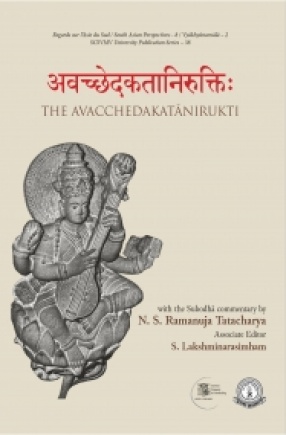
Institut Francais de Pondichery

Showing all 21 books

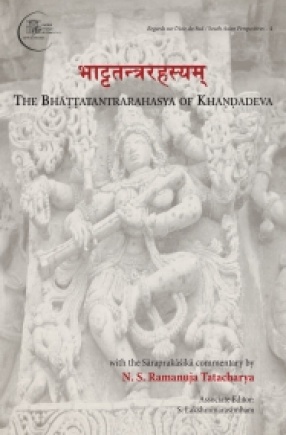

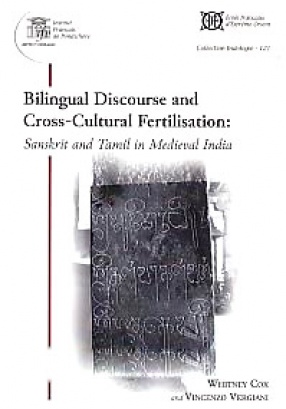
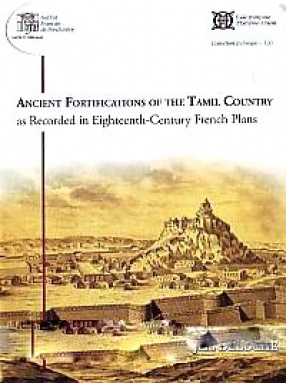

The Avacchedakatanirukti, a supplement by Gadadhara Bhattacarya (circa 1604–1709) to the commentary Didhiti on the Tattva Cintamani written by the great philosopher Raghunatha Siromani (circa 1477–1547), deals with the interpretation of avacchedakatva, the individuality of invariable concomitance in inference (vyapti), elaborating upon Raghunatha Siromani’s treatment of the topic. In his own commentary, the Subodha, Prof. N.S. Ramanuja ...

The Study of Stolen Love, with Nakkirar’s commentary, is the earliest Tamil prose work still in existence, and its influence remains clear and strong today. The work consists of three strands: A series of ancient Tamil sutras, Nakkirar’s explication of those sutras, and the elegantly beautiful ancient court poems he has chosen to illustrate his points. In so doing he lays out the prescribed conventions that govern the composition and appreciation of ...
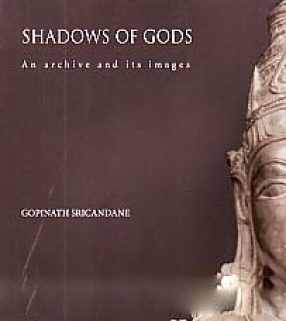
The volume presents the history of the Institut Francais de Pondichery (IFP)/Ecole Francaise d’Extreme Orient (EFEO), a research institute under a French ministry. It offers selections from the more than 1,35,000 illustrations in their archive to showcase South Indian iconography, temple plans, architecture, murals and rock art, and Jain and Buddhist sites that are located in the state of Tamil Nadu. It gives an account of the manner in which the archive ...

This volume is the fruit of the second workshop-cum-conference on the ‘Archaeology of Bhakti’, which took place from 31st July to 13th August 2013 in the Pondicherry Centre of the Ecole francaise d’Extreme-Orient. ‘Royal Bhakti, Local Bhakti’ was the topic of this scholarly encounter and is the central theme of the present volume, which attempts to clarify the roles of kings, local elites and devotional communities in the development ...

The Bhattatantrarahasya of Khandadeva (17th c.) belongs to the Bhatta school of Mimamsa. It deals mainly with the meaning of roots and suffixes, and their role in conveying the meaning of the sentence. Though this is a topic of grammar, it is widely discussed in Nyaya and Mimamsa works as well. The Bhattatantrarahasya is divided into two parts. The first part begins with the definition of dharma, the main concept of Mimamsa, and then deals at length with the ...
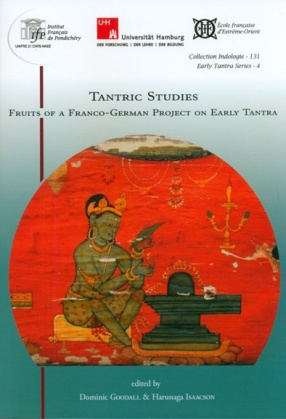
This compendium of eight papers, seeks to discover the interrelationships and common ritual syntax of the Saiva, Buddhist, Vaisnava and Saura traditions of Tantra, with a particular emphasis on the Buddhist Manjusriyamulakalpa and the Saiva Nisvasatattvasamhita.
It also throws light on the Saiva tattvas and their evolution, yogini-temples, alphabet-deities, an early treatise of snake-related magic, iconographic prescriptions in early pratisthatantras, the ...
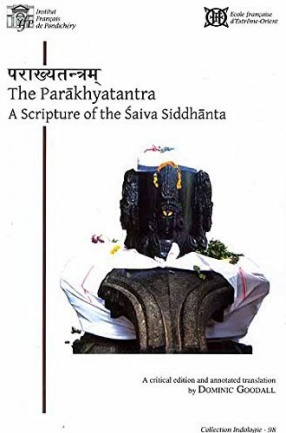
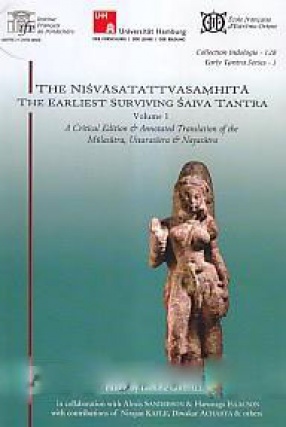
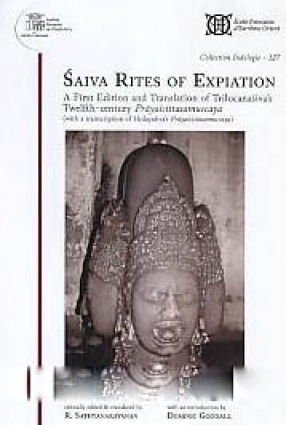
The book presents the translation of a South Indian compendium of Shaiva expiation rituals, Prayashchittasamucchaya, compiled by Trilochanashiva, a twelfth-century theologian celebrated for his Siddhantasaravali, a treatise on the Shaivasiddhanta that is traditionally studied today. Tracing the social developments within the Shaivasiddhanta that provide the context to the evolution of Shaiva reparatory rites, it particularly explains the meaning of prayashchitta, ...
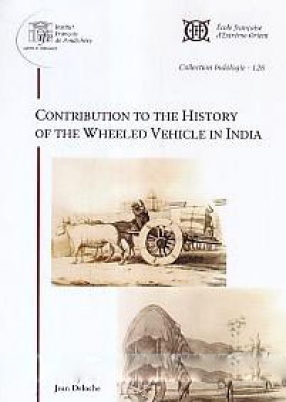
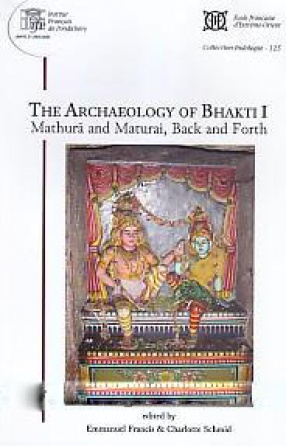
The outcome of a workshop cum conference, the volume examines the elusive, pan-Indian phenomenon of Bhakti taking into account different realms of representation such as texts and images including inscriptions that help to distinguish royal demonstrations of Bhakti from local manifestations. Referring to textual and non-textual sources, the essays by scholars explore the chronology of Bhakti across India. They view the complexities of the concept and practices of ...
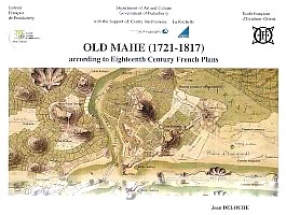
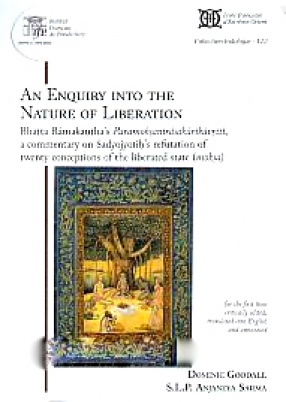
Ce livre présente un court traité philosophique qui expose et réfute vingt théories rivales de l'état de délivrance (mok.a), ainsi qu'un long commentaire discursif qui explore et développe les arguments avancés de manière explicite ou implicite par le traité. Ce traité d'origine com-prend cinquante-neuf stances rédigées par Sadyojyoti. (c. 675-725 de notre ère), qui ...

The volume presents three commentaries of Bhattoji Dikshita (seventeenth century) on the sutra 1.3.67 of the Ashtadhyayi of Panini, which is also called the Gajasutra—after the elephants that feature often in the examples. It comes in an attempt to offer a glimpse into early modern commentaries in the field of ancient Indian vyakarana or grammar. The commentaries presented here are unique in some ways: the analysis and interpretation by Bhattoji take into ...

Cet ouvrage d'essais se propose de reconstruire les échanges, les réactions, les affinités et les ruptures qui se sont produits entre les univers culturels sanskrit et tamoul au cours de la période médiévale.

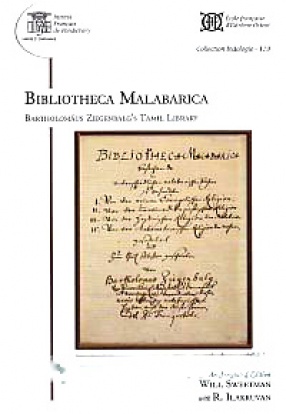
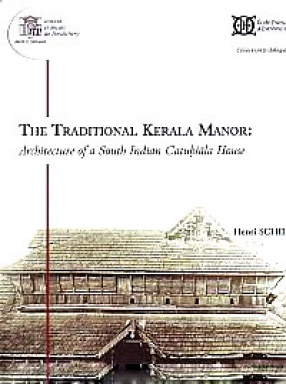
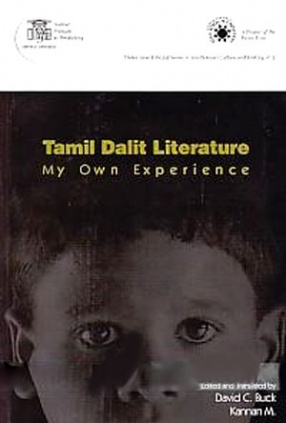
Dalit literature has arrived in Tamil, and it has come of age. Until the past twenty or thirty years, Dalit people in India, traditionally the recipients of some of India's worst discrimination and oppression, did not have much of a literary voice. Now, however, there are voices representing millions of Dalits—people who certainly do speak for themselves, but many of whom cannot write tor themselves, and would not be published if they did. Further, as ...
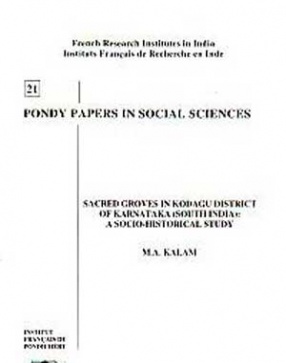
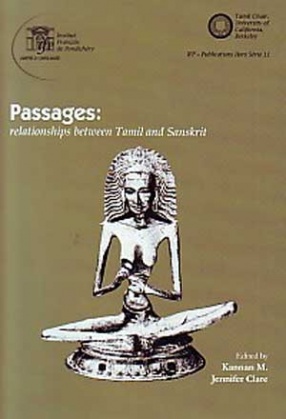
Papers presented at the International Conference: "Affinities and Oppositions : Relationship Between Tamil and Sanskrit", held at Pondicherry during 12-14 September 2007.
